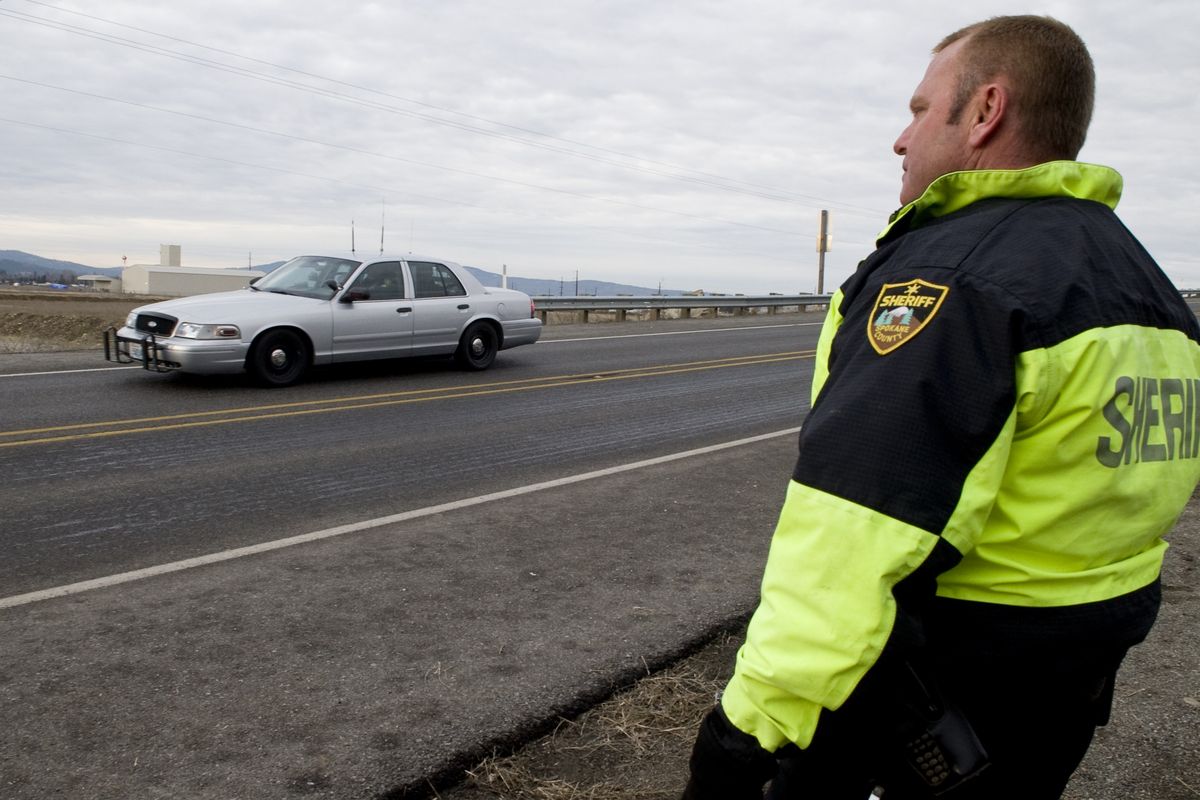Use of de-icer studied in crash reconstruction
Dec. 29 wreck seriously injured two EVHS students

In his quest to determine all the factors that contributed to a serious accident near the intersection of Trent and Wellesley avenues last month near Otis Orchards, Spokane County Sheriff’s Office Det. Dave Thornburg shut down a section of Wellesley on Friday to conduct hours of tests.
At issue was how much the application of liquid de-icer an hour before the crash contributed to the accident that seriously injured East Valley High School students Leah A. Skeen, 16, and Katie McLaughlin, 17. Skeen, the driver, had exited Trent and was heading east on Wellesley on an overpass when she lost control and slid broadside into a large metal power pole.
Both girls received serious internal injuries and spent two weeks in the hospital, Thornburg said. “The girls don’t remember the crash at all,” he said. “Speed is a factor in the collision, without a doubt. The question is, how much of a factor.”
Thornburg said he was unable to find much research about how de-icer affects the friction of the roadway, so he conducted his own. De-icer was applied to the road shortly after 8 a.m. Over and over again Thornburg crested the overpass at 60 miles per hour and slammed on his brakes, using an accelerometer to measure how long it took him to stop. “A dry road is going to be different than a wet road or an icy road,” Thornburg said. The overpass is zoned at 50 miles per hour but drops to 35 mph shortly after the point where Skeen lost control.
On Friday the temperatures and conditions were similar to Dec. 29, the day of the accident. Temperatures were in the mid 30’s and a slight breeze ruffled the dry grass on the edge of the road. Thornburg did several fast stops just after the de-icer was applied, then waited about 15 minutes before doing the same tests again. After another short wait a third set was done to test whether the length of time the de-icer was on the road affected his stopping speed. Each time his car took roughly the same space to stop.
The numbers showed that the car stopped as it would on wet pavement, Thornburg said, meaning that the liquid de-icer did affect the friction of the roadway slightly. The concern had been that the de-icer might make the road more slippery than that. “Does it appear to be a big factor? No,” said Thornburg. “I can’t 100 percent rule it out.”
In the end the major cause of the accident was the fact that the 2005 Chevy Trailblazer was going 88 miles per hour as it took the corner at the east end of the overpass, Thornburg said. The speed was downloaded from the car’s airbag control module, which saves the last five seconds of data in the event of an accident.
Thornburg estimates the car was still going about 50 or 55 miles per hour when it hit the power pole hard enough to leave a circular impression of the car’s right rear tire in the metal. The pole, which measures 17 feet in circumference at the base, did not budge. The car bounced off and spun 180 degrees before coming to a stop. “It’s just so much force,” Thornburg said. “Why they were going that fast I don’t know. Once you lose control, you’re gone. I’m surprised they didn’t die. ”
If the car had not hit the pole it would have continued into several trees and an occupied mobile home, likely killing both girls and possibly the people in the mobile home.
Thornburg said he would likely recommend that Skeen be charged with second-degree negligent driving even though her extreme speed and the passenger’s significant injuries would have allowed a felony charge of vehicular assault. Thornburg talked to the passenger’s family in making his decision. The families of the two girls are apparently close and the passenger’s family was unwilling to cooperate. “They didn’t want to press any charges,” he said.